
Berenice Abbott, Zito’s Bakery, 259 Bleecker Street , 1937, from Changing New York, 1935–39, gelatin silver print. The Jewish Museum, New York, Purchase: Mimi and Barry J. Alperin Fund

Small, light and fast, the Leica was the cellphone camera of its day. When it launched in the 1920s, professional photographers took to the streets with it and captured quick, spontaneous images that hadn’t been possible with their lumbering view cameras. Perhaps no group used the camera better in its early days than the New York Photo League, a ragtag band of urban photographers who were equally passionate about politics and aesthetics. In the 1930s and 40s, their documentation would provide a vibrant record of everyday life in New York City.
The Radical Camera: The New York Photo League 1936-1951, now at the Jewish Museum, pays tribute to the ninety-some photographers involved in this short-lived, feisty little organization. Notably, most Photo League members came from modest backgrounds (a lot were first-generation American Jews). Their aim was to throw light on their own poor neighborhoods and others, and by doing so, to effect social change. Not for them the beautiful, static landscapes being captured by Ansel Adams in the same years; instead, they turned their lenses on the teeming streets of the Lower East Side and Harlem, where children played in abandoned buildings and garbage littered the streets.
Slideshow
(more…)

© My Quiet of Gold by Cooper & Gorfer at Gestalten Space. An exhibition from The Hasselblad Foundation.

Artist team Sarah Cooper and Nina Gorfer revel in the other side of digital photography. Instead of the ubiquitous, instantaneous snapshot, Cooper & Gorfer devote hours to composing and digitally augmenting each photo, ending with a surreal image of almost-impenetrable depth. Sometimes only a simple color filter is needed to make an austere backdrop of mountains suddenly loom into the foreground; sometimes everything but a woman’s face is digitally replaced with rich, fantastic prints and colors. Depth has no fixed value in Cooper & Gorfer’s work, and light is even less reliable.
When the technique is applied to portraiture, the resulting narrative implications are arresting. My Quiet of Gold, now at Gestalten Space in Berlin through November 27th, features a series of portraits made in rural Kyrgyzstan of locals who first recounted their own remarkable personal histories to the photographers through interviews and conversations. Taken as a whole, the exhibition offers the sum of a story without conforming to sequential form, and without ever speaking a word.
Slideshow
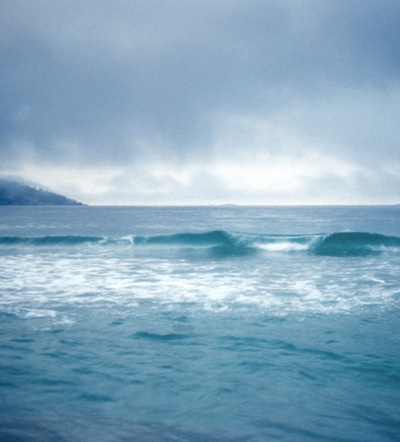
Photograph by Marcelo Gomes

Many may be familiar with photographer Marcelo Gomes for his mood-evoking fashion, lifestyle and portrait work. However few have seen much of his equally moving personal imagery, such as the series here on the ocean, where Gomes’ love for nature and style converge in perfect harmony. It’s not surprising then, to hear Gomes state his passion for texture and light and his inspiration in works by Takashi Homma, Wolfgang Tillmans and Mark Borthwick. We’re pleased to present this exclusive selection that Marcelo put together for PLANET.
Slideshow
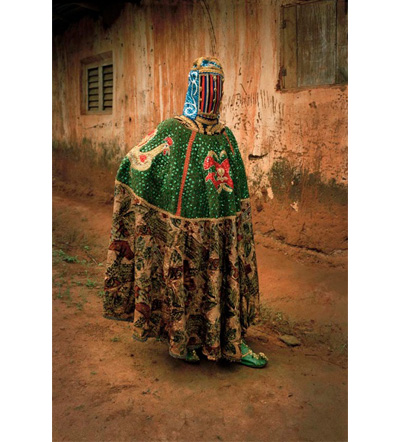
Courtesy and copyright of Jack Bell Gallery.

A native of Benin and founder of the tiny West African nation’s first photography school, Leonce Raphael Agbodjélou has always produced portraits that are uniquely poised between tradition and modernity. His latest series of photographs captures the extraordinary costumes of the Egungun ritual, a Yoruba masquerade performed by the entire community to reach out to the dead. In full regalia the masqueraders are resplendent in textiles of complex patterning and opulent color, yet the obscuration of their faces tinge their energy with an unapproachable eeriness. Each subject stands on a sunlight-soaked village street, as much a fixture of present-day Yoruba society as ever. Agbodjélou’s gloriously technicolor lens finally records Egungun garb in a way that can do it justice. The Egungun Project exhibition opens at the
Jack Bell Gallery in London on November 11th.
Click for Slideshow
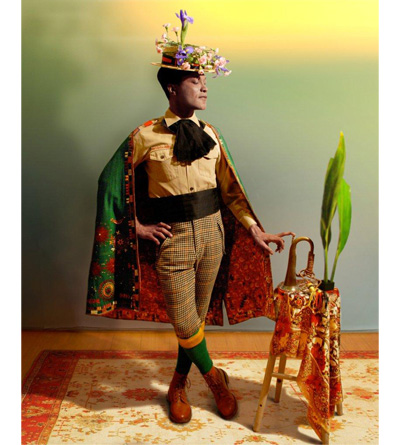
Iké Udé SartorialAnarchy: Untitled#4, 2010 Courtesy of the artist

Iranian artist Shirin Neshat’s latest curated show,
The Mask and The Mirror, is a thoughtful and timely collection of self- portraits from a provocative and diverse group of contemporary artists. Featuring works by Marina Abramović, Matthew Barney, Paolo Canevari, Feridoun Ghaffari, Ramin Haerizadeh, Lyle Ashton Harris, Y.Z. Kami, Shahram Karimi, Robert Mapplethorpe, Youssef Nabil, Nicky Nodjoumi, Bahar Sabzevari, Cindy Sherman and Shahzia Sikander, the self-portraits provide an intimate, emotional insight as well as a social documentary reflecting cultural, political and religious issues. Through costume, disguise and illusion the artist creates a world that is both fantastical and highly personal.
Shirin Neshat has always been interested in the idea of the capturing of identity and self expression and how this has been shaped and influenced by Western culture. In 1993 she created the photographic self portrait series
Women of Allah. For her, more than being autobiographical, the self portraits allowed her to provide a personal narration of other people’s stories. She used her own body as a vehicle of political and cultural expression.
Click for Slideshow
(more…)
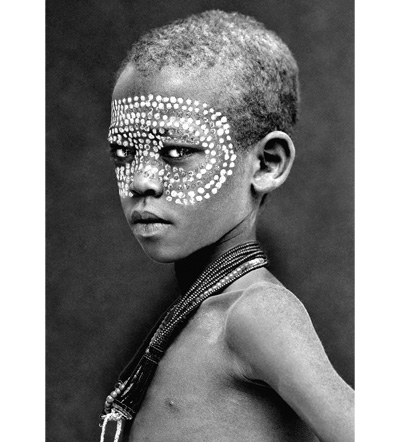

German-based photographer Mario Marino has now been immersed in his “Faces of Africa” project for over six months, producing powerfully sensitive portraits of South Ethiopians. His latest show, opening at Galerie Brockstedt, Berlin, on November 4th, focuses on the area’s children, who have inherited the tradition of wearing the leaves, chalk, and branches of the landscape as ornaments. Marino’s goal of capturing the extraordinary artistry and individualism of this practice has always existed under the threat of time—as with so many others, the regional custom recedes as tourism and technology increase their presence. But Marino’s newest portraits show a cultural heritage alive and well in the youngest generation.
Click for Slideshow
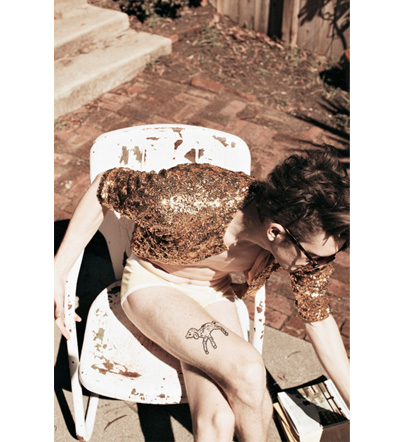
All photographs by Dan Monick

After being rejected from a creative writing class his freshman year, Los Angeles-based photographer Dan Monick was exposed to the art of the camera by Carrie Mae Weems, a prominent African-American photographer whose work has been acknowledged by such New York giants as the Whitney and the Museum of Modern Art. Since then Monick has documented “virtually everything,” as he himself proclaims, influenced by the work of Robert Frank, Nan Goldin and William Eggleston. He is fascinated with the banal, kitsch, and tacky, and the complex stories each object and subject tells about identity and community contingent to location. Monick’s sensibility captures the ephemeral beauty of these anomalies and ironic happenstances, to convey nostalgia in a unique style—one that is anarchic, often humorous, and arresting, highlighting the beauty of such banality in contemporary society.
Click for Slideshow
(more…)

Zhang Xiaogang Lamp No. 2, 2009 bronze 30-1/2 x 12-1/2 x 13 inches © 2011 Zhang Xiaogang Photo courtesy The Pace Gallery

The invention of the light bulb infamously extended the world’s workday, but for artists it changed the nature of work itself. Prior to unlimited, easily-manipulated lighting, art was made by, for, and of the temperamental illuminations of sunshine and firelight. Natural light was crucial but elusive, a combination that made it an artists’ obsession. On the canvas especially, light was almost its own person; Painters from Caravaggio to Renoir based their technique on an inspired representation of light.
Given what a revelation electric light was, it’s not surprising that artists almost immediately turned to depicting the actual bulb.
Burning, Bright: A Short History of the Light Bulb, at the Pace Gallery through November 26th, examines this impulse in artists across media. In a circus tent scene, Calder positioned the spotlight as an omnipotent god in stark gouache. Lichtenstein sculpted light rays as a solid mass, a brazenly colored object. Then there are those who used bulbs as the medium: Arman’s assembled chandelier, Noble and Webster’s billboard-style blinking lights, and a neon scrawl by Keith Sonnier standing for the light sculpture movement.
Though the miracle of technological advancement is at the heart of Burning, Bright, the exhibition leaves open the question at the conclusion of the light bulb’s story: the fact that today it is unsustainable. We are asked to consider how our sight was changed by the birth of the light bulb in the face of its death.
Click for Slideshow
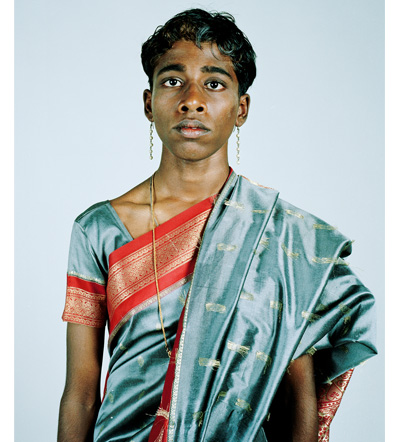
All photographs by Kalpesh Lathigra

Kalpesh Lathigra is an award winning documentary and portrait photographer known for his luminous images of forgotten communities and spaces. His work has taken him to Afghanistan, the Soviet Union and India. His current project,
State of Grace, was inspired by and shot during frequent trips to the US during the Obama elections. The images are honest and elegant, an outsiders view of the country and its current state. He is also producing a book of images from
Lost in the Wilderness, a culmination of his own US journey and the experiences of life on the Pine Ridge Reservation of the Lakota Sioux. Taking inspiration from classic American color pioneers such as Stephen Shore, Mitch Epstein and Joel Sternfeld, the project is a quiet yet powerful reflection of the people of the area. PLANET° recently caught up with Kalpesh in New York.
Click for slideshow
(more…)

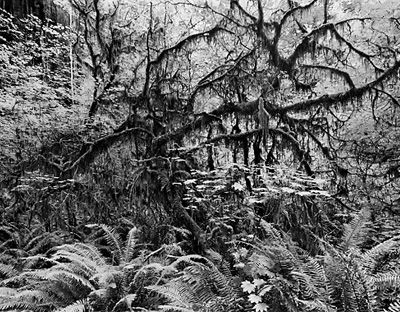
Richard Rothman


Richard Rothman began what would become his latest book in a tent in northern California, with a 4×5 camera and the intention to photograph old-growth redwood trees.
Redwood Saw, out on October 14th, is the story of Rothman’s five years photographing that forest and Crescent City, the depressed town that was cut out from it a century and a half ago. In ponderous black and white, Rothman juxtaposes the grandeur of the ancient trees with the harsh reality of a logging and fishing town that no longer has the natural resources to log or fish.
The forest photographs are arresting in their depth; Rothman consistently finds the junction at which branches, trunks, leaves, and stalks from all different plant species meet, forming a gorgeously textured tableau that speaks of the rhythms of the forest. By contrast, the images of Crescent City are divided between shots of dilapidated architecture and portraits of citizens in their homes and workplaces. The town is portrayed in a stark, almost stylized manner, as if by draining the area’s forests the logging industry managed to visibly bleed dry its own life force. If these pictures are a ruthless return to the human scale, we get some reprieve in the photos where nature and society meet. Where locals stand at the edge of the undergrowth or charred tree stumps stretch into the distance, Rothman succeeds so completely at finding a harmony and balance in the landscape that even in shots of what is undoubtedly a tragedy—a ruined forest of stumps—the regality of the natural world remains.
Click for Slideshow





 Facebook
Facebook Permalink
Permalink Digg
Digg Reddit
Reddit LinkedIn
LinkedIn StumbleUpon
StumbleUpon Tumblr
Tumblr












